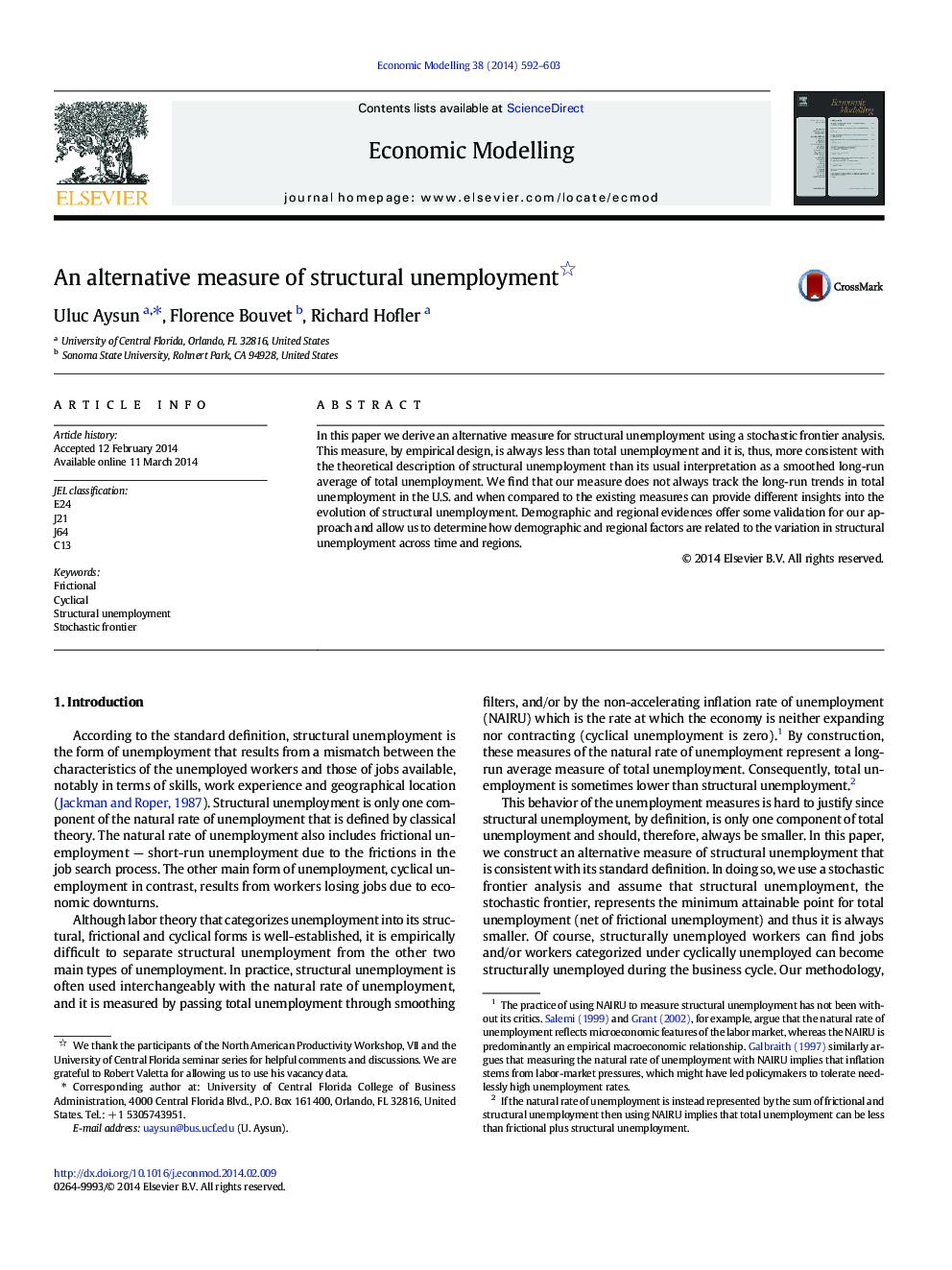| Article ID | Journal | Published Year | Pages | File Type |
|---|---|---|---|---|
| 5054410 | Economic Modelling | 2014 | 12 Pages |
Abstract
In this paper we derive an alternative measure for structural unemployment using a stochastic frontier analysis. This measure, by empirical design, is always less than total unemployment and it is, thus, more consistent with the theoretical description of structural unemployment than its usual interpretation as a smoothed long-run average of total unemployment. We find that our measure does not always track the long-run trends in total unemployment in the U.S. and when compared to the existing measures can provide different insights into the evolution of structural unemployment. Demographic and regional evidences offer some validation for our approach and allow us to determine how demographic and regional factors are related to the variation in structural unemployment across time and regions.
Related Topics
Social Sciences and Humanities
Economics, Econometrics and Finance
Economics and Econometrics
Authors
Uluc Aysun, Florence Bouvet, Richard Hofler,
